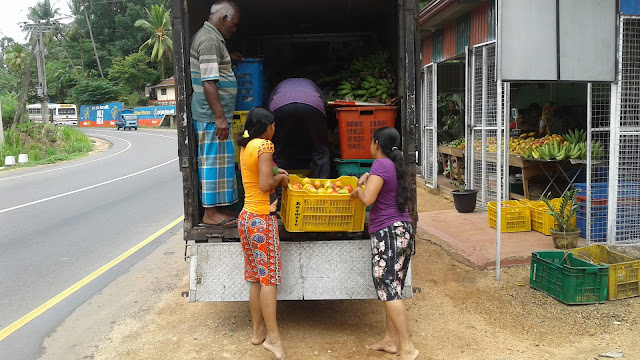Once it has been determined based on the interpretation of the maturity index that mangoes are ready to be harvested, harvest workers should follow the appropriate picking and field accumulation protocols. It is highly typical for commercial operations to make use of harvesting equipment, including ladders, clippers, nets, and harvest baskets, because these tools help speed up the harvesting process. Instruct those working the harvest not to carry or handle ladders by the rungs so that dirt does not get transferred from their shoes to the rungs to their hands and then to the fruit.
While they are waiting to be transported to the packinghouse, mangos that have recently been harvested need to be covered from the direct sunshine. The majority of commercial mango plantations store mangoes for anywhere from 30 minutes up to 6 hours before transporting them to the packinghouse. When the flesh is exposed directly to sunlight, the resulting temperature increase directly impacts the metabolism rate, which in turn reduces the possible shelf life.
Latex removal procedures
Peel damage is caused by latex that drips from mango stems during harvesting or when they are being accumulated and transported. This damage is even worse when mangoes are subjected to heat treatment. It is advised that the following precautions be carried out in order to prevent latex damage to peels:
- Collect mangoes with stems that are at least 5 centimetres long and place them in field boxes after harvesting them. Fruit that is still attached to its stem will not exude latex when pushed.
- Cut the stems to the abscission zone, which is about one centimetre long (1cm), and immediately keep the fruit with the stem end facing down to allow the latex to drop without coming in contact with the fruit's peel. Various rack-like structures, such as the one depicted in the image below, have been conceived to retain the mango fruit as the latex drips from it and shield the fruit from coming into direct contact with the ground.
The time it takes to remove latex can range from 20 minutes to as much as 4 hours, which is determined by how long it takes for the latex to cease dripping. It is standard in Brazil to collect mangoes with stems measuring more than 5 centimetres in length, then gently transfer the fruit to the packinghouse, where the stems are clipped afterwards. Latex will no longer leak from a mango fruit approximately 24 hours after harvest. This is true even if the stem is cut to a lower length. As a result, after the long-stem harvest, there is a waiting period at the packinghouse that lasts anywhere from 12 to 24 hours before the mangos are re-trimmed and placed on the packing line.
Mango Fruits are Transport to the Packinghouses
If everything goes according to plan, the packinghouse should be positioned not more than a short distance from the mango trees that are being picked. The following factors should be taken into consideration by producers while transporting fruit if it is necessary to travel significant distances. This will allow them to limit the harmful effects of transporting mangoes to the packinghouse on the fruit's quality.
Protect fruit from direct sunlight
After being harvested, mangoes that are left exposed to direct sunlight have a higher respiration rate and lose more water, reducing their shelf life. During the time that fruit is in transit, the top layers of fruit should be protected from direct sunlight by having the vehicle in which they are transported shaded.
Choose a mode of transportation that provides opportunities for ventilation.
It is essential to select a transport truck that permits air circulation while the products are in transit, especially while waiting to be unloaded at the packinghouse. This is as vital as selecting a vehicle that protects the products from the sun. It has been established that the amount of time spent waiting to unload mangoes from a truck at a normal packinghouse can range from two hours to two days, directly proportional to the amount of fruit being picked at any given moment.
Where possible, transport mangos during cooler times of the day
Mangoes are typically picked in the morning in countries such as Peru, Brazil, and Guatemala and then transported to the packinghouse in the afternoon and overnight. This practice is becoming increasingly common in the packinghouse industry. Mangos are more likely to maintain their quality and shelf life if they are transported when the temperatures are lower, which is why it is best to do so during the cooler parts of the day or at night.
Scheduling the Delivery of products to the packinghouse
The vast majority of commercial packinghouses that ship fruit to the United States adhere to a harvest timetable, which enables them to receive only predetermined quantities of mangoes at their reception line. When the quantities of fruit gathered are more than the capacity of the reception lines, the result is a wait time that is far longer than is typical before mangos are unloaded. Mangoes that are being transported in trucks are subjected to high ambient temperatures and inadequate ventilation while they are waiting inside the vehicles.
While mangoes are waiting to be unloaded, it is becoming more normal practice for reception staff to work night shifts in order to take advantage of the cooler ambient temperatures. However, the advantages in mango quality and shelf life that will likely result in lower losses and increased sales will surpass those labour expenses. Night shifts are likely to result in higher labour costs for the receiving line.
Written By: Techno Journey







